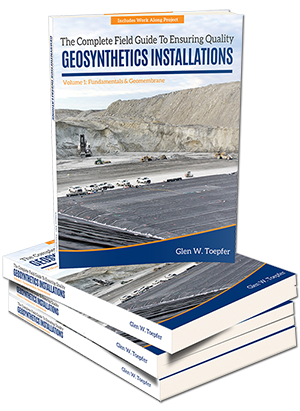Wham! A crazy opossum just ran right into my front driver’s tire and the blunt force of the vehicle has knocked the life out of the little guy.
I drive long distances on a regular basis and it was bound to happen, but I am just not one of those peeps who start grinning like a fiend and readying the stew pot. To me, road kill is always a little saddening but it is downright depressing when I see it happen to a compacted clay liner (CCL) lift. All too often I see the “life” being knocked out of CCL lifts—rubber-tire construction equipment effectively killing the heart and soul of the lift.
It happens in the blink of an eye. You physically and mentally checkmark the box indicating the preceding lift has been moisture conditioned and scarified prior to placement of the next lift. So far, you’re on a smooth ride during this CCL construction project. Wham! The next thing you know, you are blindsided by rubber tire hauling vehicles running through the scarified area after dropping their load of soil (or worse yet, before they drop their load). With each new load, the chance of having proper bonding between lifts is dropping faster than your stomach on a roller coaster. And, your ride is only going to get worse if you don’t help the contractor get back on the right path!
Most specifications for CCL construction call for scarification of the surface prior to placement of the next lift; the purpose of which is to promote bonding between lifts and avoid unbonded seams in the soil, which can become a pathway for liquid or gas migration, as well as a structural weakness. Nearly every earthwork contractor I’ve ever worked with or seen will scarify the soil ahead of the placement of the next lift. Maintaining that scarified condition (along with proper moisture) until the next lift is placed is a whole different story.
From a CQA standpoint, the best time to address the scarification issue and how the earthwork contractor is going to get from point A (subgrade) to point B (properly completed compacted clay liner) is in the pre-construction meeting, which can literally serve as a construction road map. During the pre-con meeting, hauling equipment and hauling patterns can be worked out, as well as laying out expectations and letting the contractor discuss how they are going to meet these expectations. At the end of the day we all share the same goal of “No Whammies, No Whammies!”… Road Kill Roulette How many times have you had a piece of equipment cut a flat pad for your moisture-density testing, only to see the top lift peel away? Unfortunately, by this time, usually a good-sized portion of the lift is already placed, meaning a large area may need rework. This is why it is important to constantly monitor the placement activities and catch the problem before it grows in scale. Likewise, Road Kill Roulette happens when you take a moisture-density test in an area with an unbonded lift. I have seen both experienced technicians and contractors swear to (and at) me that the previous lift was scarified before the next lift placement began which therefore means the intent of the specification has been met. A passing test only gives credence to their argument in their mind. Road Kill Roulette is a dangerous game! You can avoid this argument all together by refusing to take a test if you see the lift peel up because the specification of bonding is not met. Field Insights



